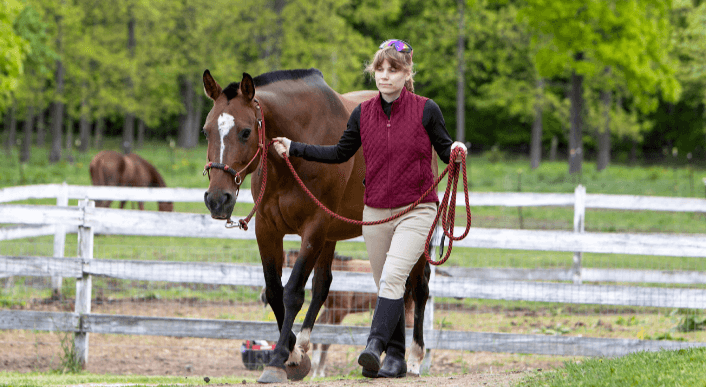What are the key elements judges look for in dressage competitions?

Introduction
Dressage, often described as the highest expression of horse training, showcases the harmonious relationship between horse and rider. Competitors perform a series of predetermined movements, known as “tests,” judged based on precision, smoothness, and overall presentation. Understanding what judges look for in dressage competitions can significantly enhance your performance and scores. This article delves into the key elements that judges prioritize, providing valuable insights for riders aiming to excel in this elegant equestrian sport.
Understanding Dressage Competitions
Dressage competitions test the horse and rider’s ability to perform a series of precise movements in harmony. Each movement in a dressage test is scored based on its execution, with a focus on the smoothness, accuracy, and overall presentation. Judges evaluate the performance according to a set of criteria, ensuring that the highest standards of the sport are maintained.
The Role of Judges in Dressage
Judges play a crucial role in dressage competitions. Their primary responsibility is to evaluate the performance of each horse and rider pair, ensuring that the movements conform to the standards of the test. Judges assess the accuracy, fluidity, and overall impression of each movement, providing scores and feedback to help competitors improve.
Precision and Accuracy
Precision and Accuracy are fundamental in dressage. Every movement must be performed at the exact point specified in the test. Deviations, however small, can lead to deductions. Riders must practice to ensure that their transitions, circles, and lines are impeccably executed.
Harmony Between Horse and Rider
Harmony is the seamless partnership between horse and rider, evident when the horse responds promptly and willingly to the rider’s aids. Judges look for a connection that is almost imperceptible, where the horse appears to perform the movements effortlessly.
Quality of Movements
The Quality of Movements is evaluated based on the horse’s natural paces, elasticity, and fluidity. Judges prefer movements that appear natural and are executed with grace. The horse should move with freedom and lightness, displaying an ease of movement that suggests minimal effort.
Use of Aids
Use of Aids refers to how effectively the rider communicates with the horse using their legs, hands, seat, and voice. Judges look for subtle, almost invisible aids that result in precise movements. Overly obvious or rough aids can lead to lower scores, as they indicate a lack of harmony and finesse.
Paces and Transitions
Paces, including the walk, trot, and canter, must be regular, active, and free. Transitions between paces, and within paces, must be smooth and well-prepared. Judges evaluate the horse’s ability to maintain rhythm and balance during these transitions.
Impulsion and Rhythm
Impulsion and Rhythm are critical for demonstrating the horse’s energy and engagement. Impulsion is the controlled forward energy created by the rider’s aids, while rhythm refers to the regularity of the horse’s steps. Judges look for a rhythmic and energetic performance that enhances the overall quality of the movements.
Collection and Self-Carriage
Collection and Self-Carriage involve the horse carrying more weight on its hindquarters, resulting in a more elevated and balanced posture. This demonstrates the horse’s strength, flexibility, and training. Judges look for movements where the horse shows increased engagement and lightness.
Submission and Willingness
A horse’s Submission and Willingness are evident in its responsiveness and cooperation. Judges assess whether the horse performs the movements without resistance and with a calm, attentive attitude. A willing horse responds promptly to the rider’s aids and maintains a positive demeanor throughout the test.
Expression and Athleticism
Expression and Athleticism highlight the horse’s physical capabilities and presence. Judges appreciate horses that perform with enthusiasm and a certain flair, showcasing their athletic abilities. The horse should appear confident and expressive, enhancing the overall performance.
Dressage Tests and Scoring
Dressage tests are divided into levels, each with increasing complexity. Scores range from 0 to 10 for each movement, with 10 being the highest. Judges also provide collective marks for overall aspects like the rider’s position, effectiveness of aids, and general impression.
Importance of Presentation
Importance of Presentation in dressage extends beyond the movements. The turnout of both horse and rider, including cleanliness, grooming, and attire, contribute to the overall impression. A well-presented pair demonstrates professionalism and respect for the sport.
Common Mistakes in Dressage
Common mistakes include inaccurate movements, lack of rhythm, and visible tension in the horse. Riders should also avoid overusing aids, as this can indicate a lack of harmony. Practicing consistently and seeking feedback can help minimize these errors.
Training Tips for Success
Success in dressage requires dedication and effective training. Riders should focus on building a strong foundation, emphasizing basics like rhythm, relaxation, and connection. Regular practice, along with professional coaching, can significantly improve performance.
Developing a Strong Foundation
A strong foundation in dressage involves mastering basic skills such as rhythm, suppleness, and contact. These elements are essential for more advanced movements and ensure that the horse and rider can perform with confidence and precision.
The Significance of the Rider’s Position
The rider’s position affects the horse’s balance and movement. Judges look for a balanced, quiet seat that allows the rider to give subtle aids. Proper posture and alignment can enhance communication and improve overall performance.
Role of Dressage in Horse Welfare
Dressage promotes horse welfare by encouraging ethical training practices. Proper dressage training improves the horse’s physical fitness, flexibility, and mental well-being, ensuring a healthy and happy equine athlete.
Advanced Dressage Movements
Advanced dressage movements, such as piaffe, passage, and pirouettes, require a high level of training and skill. These movements demonstrate the horse’s strength, agility, and advanced training, often earning higher marks from judges.
Freestyle Dressage
Freestyle dressage allows riders to create their own routines set to music, showcasing creativity and choreographic skills. Judges evaluate the technical execution and artistic impression, rewarding innovative and harmonious performances.
Historical Evolution of Dressage
Dressage has a rich history, originating from classical riding practices used in military training. Over time, it evolved into a competitive sport, with structured tests and international competitions, reflecting the art and discipline of classical horsemanship.
Influential Figures in Dressage
Influential figures like Nuno Oliveira, Reiner Klimke, and Charlotte Dujardin have significantly contributed to the sport. Their training philosophies and competitive achievements have shaped modern dressage practices and inspired countless riders.
Global Dressage Competitions
Major global dressage competitions include the Olympic Games, World Equestrian Games, and European Dressage Championships. These events showcase the highest level of dressage talent and provide a platform for international competition.
Impact of Dressage on Equestrian Sports
Dressage techniques and principles influence other equestrian disciplines, such as show jumping and eventing. The focus on balance, control, and harmony enhances performance across various riding styles.
Technological Advancements in Dressage
Technology, such as video analysis, biomechanics, and advanced training equipment, has revolutionized dressage training. These innovations help riders and trainers optimize performance and ensure precise execution of movements.
Dressage in Popular Culture
Dressage has been featured in films, literature, and art, highlighting its beauty and discipline. Its representation in popular culture often inspires interest and appreciation for the sport.
Future Trends in Dressage
Future trends in dressage may include increased emphasis on rider and horse biomechanics, advanced training techniques, and enhanced spectator engagement through technology and media coverage.
Conclusion

Understanding what judges look for in dressage competitions is essential for achieving success. By focusing on precision, harmony, quality of movements, and effective use of aids, riders can improve their scores and overall performance. Dressage is not just a test of skill but a celebration of the partnership between horse and rider, reflecting the art and discipline of classical horsemanship.
FAQs
What is the main focus of judges in dressage competitions? Judges primarily focus on the precision, accuracy, and harmony of movements, assessing how well the horse and rider execute each element of the test.
How important is the rider’s position in dressage? The rider’s position is crucial as it affects the horse’s balance and responsiveness. A correct, balanced position allows for effective communication and control.
What are common mistakes to avoid in dressage competitions? Common mistakes include inaccurate movements, lack of rhythm, visible tension in the horse, and overuse of aids. Consistent practice and seeking feedback can help avoid these errors.
How can riders improve their dressage scores? Riders can improve their scores by focusing on basic skills, such as rhythm, relaxation, and connection, and by practicing regularly under professional guidance.
What are some advanced dressage movements? Advanced movements include piaffe, passage, and pirouettes, which require high levels of training and demonstrate the horse’s strength and agility.
How has technology impacted dressage training? Technology, such as video analysis and biomechanics, has enhanced dressage training by allowing riders to optimize their performance and ensure precise execution of movements.



